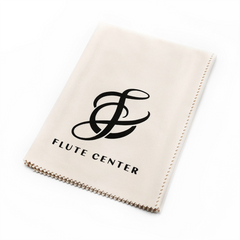How Wood Density Affects the Sound of Flutes and Piccolos: A Closer Look
When it comes to choosing the species for your wood flute or piccolo, the choice of wood is far more than an aesthetic decision, it’s a factor that impacts the color, responsiveness, and overall tone. Different woods offer distinct tonal qualities, and flutists today have more options to choose from than ever before. While all woods discussed are responsive and capable, the player's choice often depends on their desired tone profile, and their preferred style of articulation.
In this article, we’ll explore how the density of different species affects the tone and responsiveness of wood flutes and piccolos.

Higher Density Woods
Among the densest woods used in flute and piccolo making are Grenadilla, Mopane, Kingwood, Cocobolo, and Cocus. These woods typically exceed 1000 kg/m³ in density and are prized for their powerful sound qualities.
What to Expect:
-
Strong Projection and Resonance: Brilliant projection with a rich, resonant voice that carries effortlessly in concert halls.
-
Stable, Consistent Playing Feel: Steady response across registers provides the player with an ease of intonation
-
Clear, Fast Articulation: Fast passages and crisp attacks come naturally, helping you execute technical music with clarity.
-
Rich Tonal Depth: A robust low register and shimmering high register
Medium Density Woods
Woods such as Pink Ivory, Olivewood, Rosewood, and Bocote fall into the medium density category.
What to Expect:
-
Warm and Sweet Tone: delivers a warm, inviting tone that many players find luscious and intimate.
-
Balanced, Luxurious Projection: Softer and more refined sound, often described as "luxurious" or "light”
-
Rich Overtones and Color: The presence of complex overtones adds dimension and allows a player to use a wide range of tone colors
-
Slightly Mellow Response: Lighter woods can offer a slightly gentler attack, perfect for players seeking nuance over sheer power
Why Density Matters for Your Flute or Piccolo
-
Projection and Power: The denser the wood, the more your instrument will project, cut through an ensemble, and maintain tonal stability.
-
Tone Color and Warmth: Medium density woods bring warmth and tonal complexity, often preferred by those who want a rich, sweet voice with a bit more subtlety
-
Playing Feel: High-density woods generally feel more immediate and stable, while medium-density woods offer a slightly more flexible, expressive response.
Final Thoughts
Whether you gravitate toward the bold resonance of Cocobolo, or the warm, colorful tones of Rosewood, knowing how wood density influences sound can help you make an informed choice when selecting a wooden flute, piccolo, or headjoint.
If you’re searching for an instrument that matches your tone goals, exploring different wood densities is a great place to start. If you’re in the market for a new wood headjoint for your flute or piccolo, we recommend starting with a free trial at Flute Center. Submit our trial request form or contact a Resident Flutist today; you may be one shipment away from finding your perfect sound.

Leave a comment